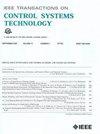Explicit Spacecraft Thruster Control Allocation With Minimum Impulse Bit
IF 3.9
2区 计算机科学
Q1 AUTOMATION & CONTROL SYSTEMS
引用次数: 0
Abstract
Thruster control allocation (TCA) is a key functionality for many spacecraft, with a significant impact on control performance, propellant consumption, and fault tolerance. Propellant-optimal solutions are desirable and are either based on onboard numerical optimization, or explicit optimization via the use of offline-generated look-up tables (LUTs). This article proposes a TCA and modulation method of the latter type by using multiparametric programming and presents a novel fast LUT evaluation algorithm. Fault tolerance and the handling of non-attainable control commands with full controllability exploitation are also addressed. Furthermore, the solution is extended to include the non-convex minimum impulse bit (MIB) constraint, where the proposed solution can find the global optimum. The use of this constraint is demonstrated in a close-range orbital rendezvous scenario, yielding significant improvements to the performance of boosts, forced motions, and station-keeping maneuvers, at the cost of greater propellant consumption and computation time. Results in consumer hardware for a12-thruster configuration show a worst case onboard computation time of基于最小脉冲位的显式航天器推进器控制分配
推力器控制分配(TCA)是航天器的一项关键功能,对航天器的控制性能、推进剂消耗和容错性有重要影响。推进剂优化解决方案是理想的,要么基于机载数值优化,要么通过使用离线生成查找表(lut)进行显式优化。本文提出了一种基于多参数规划的TCA和调制方法,并提出了一种新的快速LUT求值算法。还讨论了容错性和处理无法实现的控制命令与完全可控性开发。此外,将该解扩展到包含非凸最小脉冲位约束,该解可以找到全局最优解。在近距离轨道交会场景中演示了这一约束的使用,以更大的推进剂消耗和计算时间为代价,显著改善了助推、强制运动和空间站保持机动的性能。在a12推进器配置的消费者硬件上的结果显示,在没有MIB约束和有MIB约束的情况下,最坏情况下的机载计算时间为$7~ $ 5和0.5 ms,这比使用最先进的优化器进行数值优化的时间低了两个数量级。所提出的机载算法简单,非迭代,并且具有最坏情况下的计算量保证。
本文章由计算机程序翻译,如有差异,请以英文原文为准。
求助全文
约1分钟内获得全文
求助全文
来源期刊

IEEE Transactions on Control Systems Technology
工程技术-工程:电子与电气
CiteScore
10.70
自引率
2.10%
发文量
218
审稿时长
6.7 months
期刊介绍:
The IEEE Transactions on Control Systems Technology publishes high quality technical papers on technological advances in control engineering. The word technology is from the Greek technologia. The modern meaning is a scientific method to achieve a practical purpose. Control Systems Technology includes all aspects of control engineering needed to implement practical control systems, from analysis and design, through simulation and hardware. A primary purpose of the IEEE Transactions on Control Systems Technology is to have an archival publication which will bridge the gap between theory and practice. Papers are published in the IEEE Transactions on Control System Technology which disclose significant new knowledge, exploratory developments, or practical applications in all aspects of technology needed to implement control systems, from analysis and design through simulation, and hardware.
 求助内容:
求助内容: 应助结果提醒方式:
应助结果提醒方式:


